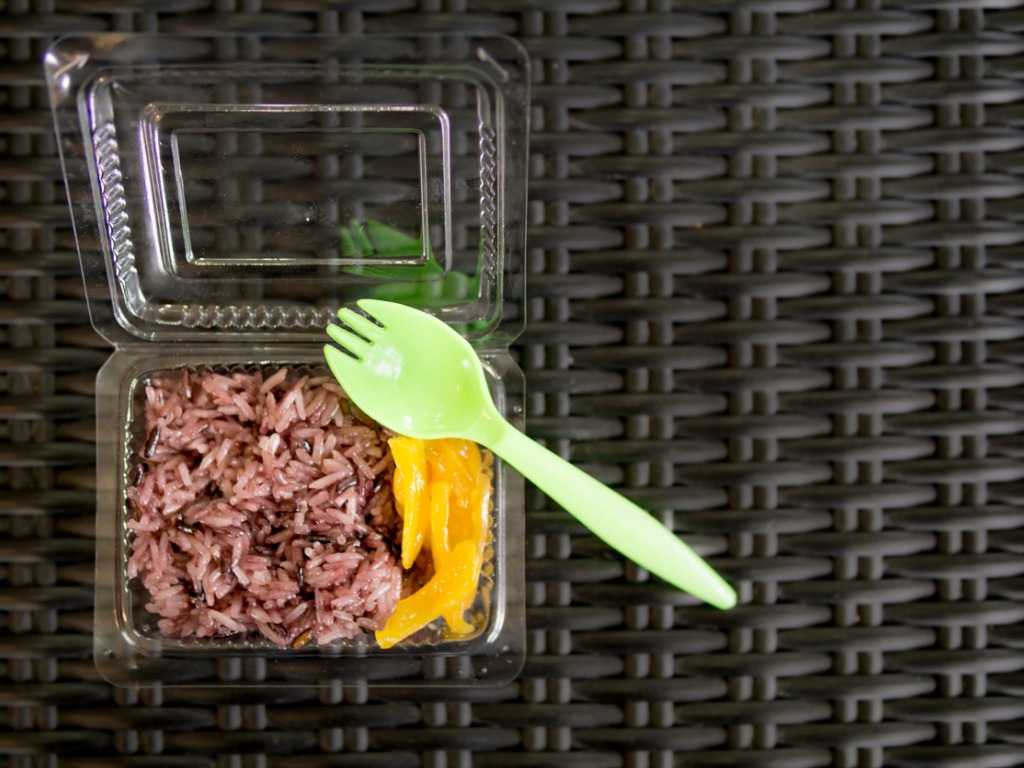
Another holiday, another shameless bout of food promotions. We thought we’d heard it all, but as it turns out, Mother’s Day is no more exempt from dreadfully gendered holiday gimmicks than Valentine’s Day is. This weekend, rather than mock the latest shameless attempts by companies to cash in on holiday-themed food merchandise—a heart-shaped bagel for mom, anyone?—we thought would offer something more nourishing: a selection of favorite essays by and about women at the intersection of cooking. These are stories about the way identity, happiness, and, in some cases, grief are reflected in our food, passed down in cherished recipes and heirloom cookware, illuminating the resourcefulness and unsung ingenuity of women in the kitchen. Bon appetit.
“The best moon milk recipe? To drink something else”
Khushu Shah, Taste Cooking
In the last year, different varieties of turmeric-spiked beverages have flourished in upscale cafes and grocery stores, a faddish new class of “golden” beverages graced with the spice’s unmistakably bright hue. Yes, “golden milk” has a nice ring to it. But Shah is a little baffled by the way some have co-opted her mother’s favorite spice, explaining how the ingredient’s more recent associations with luxury and prosperity—thanks to $8 dollar lattes and beauty blog endorsements—mischaracterize the way turmeric milk has been consumed by South Asian families for decades. Growing up, Shah thought of turmeric milk, or haldi doodh, more like Robitussin than the latest wellness trend-approved treat. It’s something served to loved ones when they come down with a cold, a medicinal tonic “always associated with, well, feeling like shit.”
“Korean culinary cures: From tummy aches to hangovers, here’s how moms cook up relief”
Eileen Cho, NPR’s The Salt
Sometimes the best medicine is a meal, and not the kind you can order at restaurants. For NPR’s The Salt, Eileen Cho takes stock of the culinary remedies her Korean immigrant mother brewed out of their kitchen. Think soybean sprout soup as a hangover cure, or soothing citrus marmalade tea for scratchy throats. There isn’t necessarily scientific backing for many of the antidotes her mother prescribed, Cho notes—only personal stories of healing. But that, as any person suffering from a sickness knows, is more than enough.
“The man’s man’s kitchen”
Ashley Fetters, Curbed
The pastel-colored, florally adorned pots and glassware that once dominated family kitchens have almost disappeared from retail shelves. It’s 2018, and colorless, steel gadgets with chunky black accents rule the market. Fetters examines how gendered expectations within the household have impacted the look and functionality of kitchen appliances. Consider, for instance, the Crock Pot: When it first hit the market in the early 70s, it was a champion for the working mom, branded to match the femininity of all other women’s products at the time. Now, 30 years later, tried-and-true appliances no longer seem to cater to the working mother’s lifestyle—and cookware, instead, seems to serve a manlier narrative about dinnertime.
“On embracing femininity when your profession is dominated by guys”
Ginger Pierce, Chef’s Feed
Chef Ginger Pierce recounts her path towards accepting her femininity while working in the male-oriented world of professional kitchens, where she’d adopted an androgynized style almost as a way to obscure that aspect of her identity. “Feminism has no gender. Neither does beauty, And yet, femininity is so often equated with weakness in this industry,” she writes. “I spent much of my career muting my femininity in an effort to be accepted. Did someone tell me to do this? Not once. I picked up on cues that indicated I wouldn’t be taken seriously if I didn’t.” After watching an admirable female chef have her career torn down overnight, destroyed by rumors that she’d gotten by on looks rather than skill, Pierce explains how she decided to fully own her status as a woman—and why she felt doing anything else would mean death to her dream to become a chef.
“Ethiopia and Eritrea’s long history with lasagna”
Hannah Giorgis, Taste Cooking
For people in, from, and of Ethiopia and Eritrea, lasagna occupies a complicated yet integral space on the dining table. The dish is a relic of Italy’s imperialism in the Horn of Africa region beginning in 1896, but it’s also a popular and beloved food that can be found at nearly every Ethiopian and Eritrean celebration. Now, it has become a form of rebellion, Giorgis writes, a dish diasporic communities have worked actively to decolonize, adapt, and make new. As a result, the dish’s associations have become as layered as the food itself, a reminder of both home and troubled history, adapted to suit taste preferences, dietary restrictions, and ingredient availability. These constant adjustments across families, borders, and generations make Ethiopian lasagna both sustenance and history lesson, a meal that carries what the writer Rahawa Haile calls “a mother’s fingerprint.”
“The more I learn about breast milk, the more amazed I am”
Angela Garbes, The Stranger
Mothers’ milk is more than just a form of nourishment—it’s a means of communication. When a newborn is nursed, some of their “saliva backwash” is transferred back to their mother’s body, which detects missing nutrients or much-needed pathogens and generates them accordingly for the next feeding. Seattle writer Angela Garbes discovered this in her research for a widely-read 2015 feature, which details the incredibly precise mechanics of breastfeeding with awe, tenderness, and scientific rigor. We write so much about what we eat as adults, focusing on the complex systems that food navigates before it ends up inside of us. Even though breast milk is produced within a mother’s body and consumed directly by a child, Garbes reminds us that it follows just as intricate a journey.











